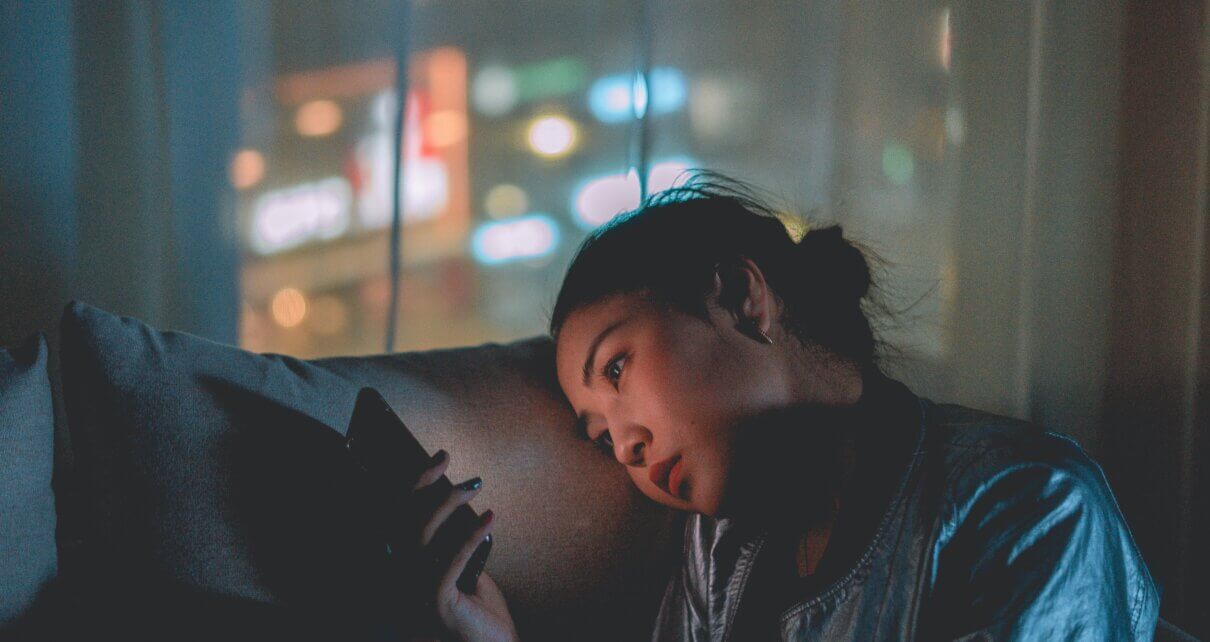Technology has played a large role in students’ experiences with classes and socialization during the COVID-19 pandemic. While it offered broad horizons and significant opportunities in terms of online learning and staying connected with friends via social media, some students have found that excessively plugging in had a detrimental effect on their overall college experience.
Nick Kowalski, a sophomore homeland security student, narrated his experiences with online learning, citing that it had both advantages and disadvantages. “Online learning was very convenient because you could be anywhere and just pop into a class, not having to worry about being late or walking to a class, especially if you have it early in the morning or late at night,” he said. “However, it feels more rewarding when you are in the classroom with your other peers and professor teaching you something face to face.”
Tyler Gennaro, a sophomore computer science student, said that he preferred online learning for two reasons—the workload was more manageable, and the tests were less stressful. “I didn’t feel the stress of being in a classroom with other people, seeing people complete [exams] before I did, and making me feel subconscious,” he reflected.
While some students felt that online learning was significantly more convenient, many did not feel as if they were fully learning the material presented. “Though online schooling was a lot less pressure, and more convenient, it didn’t feel like I was learning anything,” Kowalski said.
The social aspect was another big problem as well—during the heart of the pandemic, students’ connection to the outside world was diminished as the state began to implement stay-at-home orders to limit the spread of COVID-19.
“I was on campus last year, and it was very restrictive with where I could go and who I can hang out with; since then, I’m happy that I can see my friends more often, but it was annoying to be told that I was too close to my friends,” Gennaro said.
While students were stuck inside their homes or dorms, they turned to their phones as an avenue for socialization while their physical proximity was compromised.
Nicholas Testa, a senior history student, reflected on his experience with communication with friends throughout the pandemic ever since quarantine first began his sophomore year.
“Having to communicate with people via social media during COVID hasn’t exactly been the best because I missed having the social interaction in person,” he said. “Having to contact people via social media has been more difficult because you can’t see them in person like you’re used to on campus and you can’t really tell the emotions behind their response. For example, you can get a response that may come off as snide, but it was actually meant to be taken a different way.”
Students like Testa, who experience these barriers in communication, may have lost friendships either because of miscommunication or simply due to loss of contact.
“It didn’t make me feel good, losing people,” he said.
This lack of socialization and physical proximity has led to dips in mental health for young adults in college as they experienced an elongated period of physical isolation. According to data from a KFF (Kaiser Family Foundation) Health Tracking Poll, the average share of adults reporting symptoms of Anxiety Disorder and/or Depressive Disorder jumped from 11 percent from January-June 2019 to 41.1 percent in January 2021.
Testa narrated his own experience with mental health during the peak of pandemic isolation, “I absolutely felt isolated. Being alone in my house for two years really took a toll on my mental health. I just felt lonely, didn’t have social interaction, and I missed seeing other people that weren’t my family.”
However, now that students are back in person and connected not only through phone screens, things are looking up. “I definitely feel a lot better,” Testa said. “It’s nice seeing actual human faces on campus now.”
A student’s social life outside the classroom is a major component to the college experience, and while some students found it tough to communicate via little rectangular screens, it kept them afloat during a time of social isolation.
The pandemic resulted in significant changes to the way students interact with work as well. As seniors steadily approach their graduation, they face a job market that has been oversaturated with remote positions. Some students consider this a blessing, while others consider it a curse.
While many students have struggled with the barriers of living life through the world wide web, technology has allowed students to stay somewhat connected in regards to school, work, and social life.




